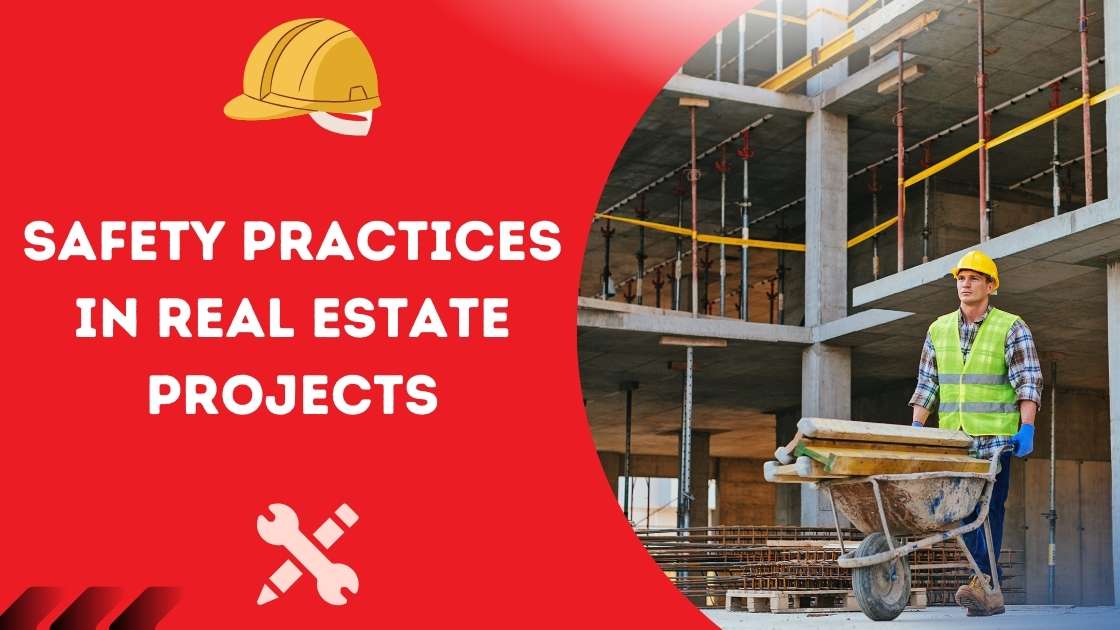The phrase ‘safety first’ resonates deeply when it comes to real estate projects. A construction site buzzing with heavy machinery, soaring heights, and ceaseless activity can be a hive of hazards if safety norms are overlooked.
Neglecting the well-being of workers doesn’t just have human costs—it also ushers in financial losses and reputational damage. For instance, even relatively small accidents and safety code violations can lead to successful lawsuits in small claims courts, placing a significant strain on active projects. In this high-stakes environment, the confluence of adequate safety practices, laws, and regulations with the pioneering wave of technology forms the cornerstone of worker well-being.
This article delves into this critical intersection, shedding light on the importance of fostering a safety-centric culture in the dynamic sphere of real estate projects.
In a Rush? ⚡ Let’s read quick summary
– A safety-first culture is important because it can lead to fewer accidents and injuries.
– It’s also a legal requirement to provide a safe workplace for workers.
– Some key safety practices to implement include using personal protective equipment (PPE), having regular safety drills, reporting incidents, and doing job hazard analysis.
– Technology can also be used to improve worker safety. For example, drones can be used to inspect sites, and wearable tech can be used to monitor workers’ health and safety.
– In the future, we can expect to see even more technological integration in safety practices, such as the use of predictive analytics, AI, and IoT.
– By following safety rules and practices, employers can create a safer and healthier working environment for their employees.
Importance of a Safety-first Culture
From residential housing to commercial real estate projects, cultivating a safety-first culture isn’t merely recommended—it’s indispensable. This culture has profound implications, influencing not just the well-being of workers but also shaping project deliverables, schedules, and overall success.
To bring this into perspective, adopting a “Zero Accidents” philosophy can lead to a significant decrease in incident rates, reinforcing the direct link between safety-conscious environments and reduced workplace injuries. This correlation underscores the need to embrace a proactive safety approach rather than merely responding to incidents.
A safety-first culture is also a legal mandate. For instance, the Occupational Safety and Health Administration’s General Duty Clause (Section 5(a)(1)) stipulates that employers have a legal obligation to provide a workplace devoid of recognized hazards. This includes the adherence to specific regulations such as the OSHA Construction Standards (29 CFR 1926) covering multiple areas from scaffolding and fall protection to electrical installations.
Furthermore, abiding by safety training and education rules (29 CFR 1926.21) ensures workers are properly equipped to navigate potential hazards. Hence, a safety-first culture isn’t just beneficial—it’s legally required.
Key Safety Practices to Implement in Real Estate Projects
Safety practices such as adequate use of Personal Protective Equipment (PPE), regular safety drills, incident reporting, and job hazard analysis are key.
For example, OSHA’s standards for Construction PPE (29 CFR 1926 Subpart E) specify the use of protective equipment in hazardous settings.
Fall protection, as per OSHA’s fall protection standards (29 CFR 1926.501), is another area demanding stringent adherence.
The Role of Technology in Improving Worker Safety
In the digital era, cutting-edge technologies are pivotal in augmenting workplace safety measures.
Unmanned Aerial Vehicles (UAVs), or drones, equipped with high-resolution cameras and infrared sensors, can perform comprehensive site inspections. This reduces the necessity for workers to venture into high-risk areas and aids in the identification of structural faults or potential hazards, aligning with OSHA’s Site Inspection regulations (29 CFR 1926.20(b)(2)).
Wearable tech, including biometric sensors and GPS locators, offer real-time monitoring of worker health and position. Advanced wearables can detect overexertion, dehydration, and heat stress, facilitating prompt medical interventions as per the first-aid provision guidelines (29 CFR 1926.50).
Artificial Intelligence (AI) and Machine Learning (ML) algorithms can analyze historical accident data and real-time site conditions, enabling prediction of potential accidents, and contributing to the proactive management of workplace safety.
Internet of Things (IoT)-enabled safety helmets, for instance, can register sudden impacts or elevation drops indicative of a fall, instantly triggering alerts as per OSHA’s Incident Reporting regulation (29 CFR 1904.39).
Thus, technology holds immense promise in transforming the safety paradigm in real estate projects.
Future Trends and Predictions for Worker Safety in Real Estate
Technological integration within safety practices, including predictive analytics, AI, and IoT, promises to redefine worker safety norms in real estate.
Adherence to OSHA’s Electronic Recordkeeping Rule (29 CFR 1904) and its potential expansion to include real-time data from IoT devices could herald a new era of proactive safety management.
Furthermore, leveraging digital platforms to fulfill OSHA’s safety training and education requirements (29 CFR 1926.21) will likely make safety education more comprehensive and widely accessible, transforming the industry’s safety landscape.
Conclusion
Prioritizing worker safety is not just an ethical obligation but also a business imperative in real estate. Employers must constantly adapt and evolve their safety practices, aligning them with the latest standards, such as those set by OSHA, and utilizing technological advancements. A safety-first culture, compliance with safety regulations, and leveraging technology can collectively create a safer and healthier working environment in real estate projects.

